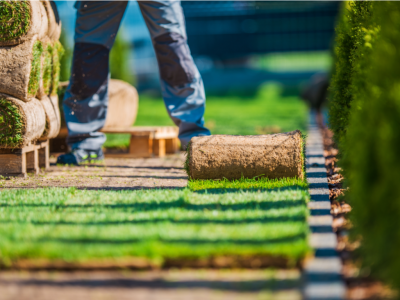
How We Transformed our Yard to Appeal to Buyers
For over 30 years, we’ve maintained an extensive collection of perennials and vegetables, plus a substantial water garden, including a waterfall, in our Chicagoland home. Our backyard oasis has been a labor of love, but we’re growing tired of the work and considering a change of scenery.
If we listed our home for sale, would potential buyers love or hate our yard?
Water gardens are visually striking, but they are admittedly difficult to maintain, especially when you have a massive silver maple dropping debris into it.
It’s hard to imagine buyers warming up to the prospect of caring for the pond. Plus, it’s easy to imagine buyers with young children fearing a drowning hazard.
Of course, we also considered our emotional attachments. Memories of our sons spotting frogs on the lily pads. The relaxing sounds of the waterfall while sitting on the deck. Soft droplets rippling the surface that instantly answered the question, “Is it raining?”
Despite fond memories, the water garden had to go.
We rolled up our sleeves and started transforming the yard. In addition to improving our home’s resale value and reducing our yard work, we also wanted to repurpose the materials as much as possible.
Step 1. Dismantle the water garden
The pond and surrounding plantings easily consumed over 500 square feet of yard space.
Heavy slabs of ledge rock lined edges of the pool and formed the waterfall mound. Many pieces weighed several hundred pounds. Below the water lay several inches of river stone and a thick black plastic liner.

Everything had to be removed, including a wood bridge. The waterfall proved to be the biggest challenge since many stones were cemented together with reinforced concrete!
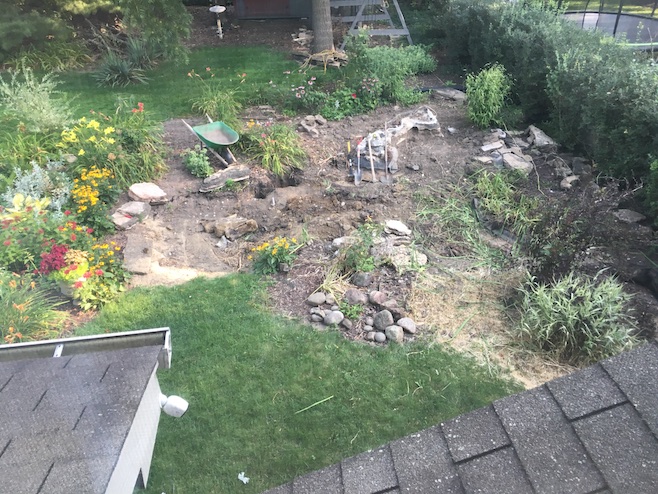
One stone at a time, we rolled all the ledge rock out of the way. Plants were also temporarily relocated.
Using Nextdoor, we connected with neighbors who wanted the large cobblestones and the smaller river rock.
We saved a few large pieces of the liner because we have several open mulch areas. Heavy black plastic is an excellent and environmentally-friendly weed killer. Just spread it out, and the sun will kill any weeds below within a few days.
Step 2. Fill the hole
Once we cleared the pond materials and plants from the area, it was time for professional help.
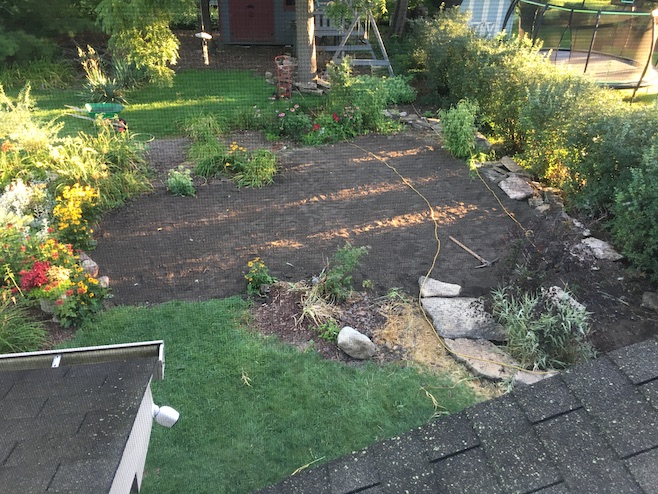
Our crew brought a truckload of topsoil and spread it over the open pit. After they left, we used a rope to outline new perennial beds covering a much smaller section of the yard.
Step 3. Reposition stones and plants
Moving large rocks is time-consuming, backbreaking work. DIYers will want a hand truck. We’d tip each rock on end, scooch it onto the dolly, roll it across the yard, then drop and pivot the stone into position.
Arranging stones of different shapes and sizes into an attractive sequence involves trial and error. Frequently, we found ourselves shuffling them around.
Once we settled on an appealing sequence, we’d add fill to level and secure each stone.
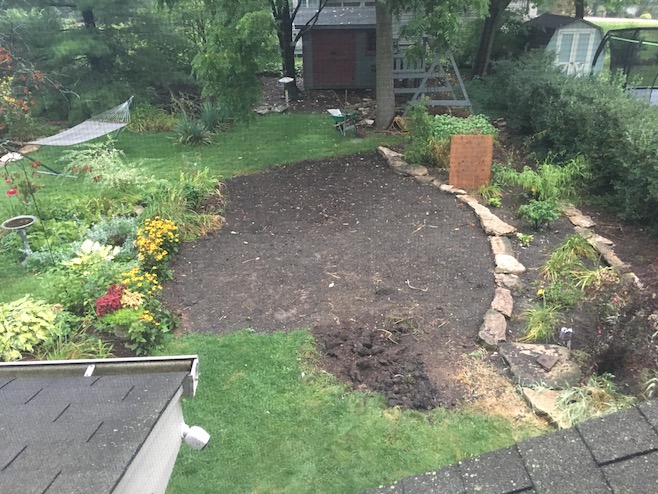
Next, we transplanted the perennials into their new spots and watered them daily. We also set up a plywood board to provide shade for one vulnerable plant until it recovered.
Step 4. Let there be grass
With the first set of rocks in place, it was time to expand the lawn.

At this point, we were too tired and impatient to grow grass. So we asked our friendly landscaping crew to return, this time hauling and laying fresh sod!
Step 5: Move more rocks
After converting the water garden, we still had a substantial pile of unused stones. Instead of giving them away, we decided to extend the edging across the yard, leaving various gaps to enter the flower and vegetable beds and the tool shed.
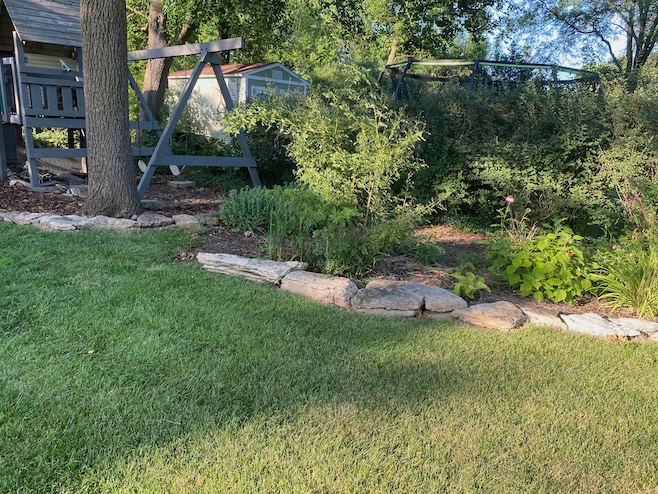
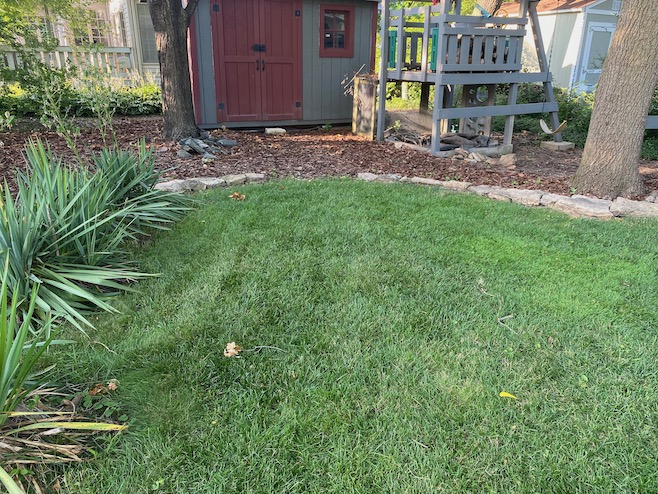
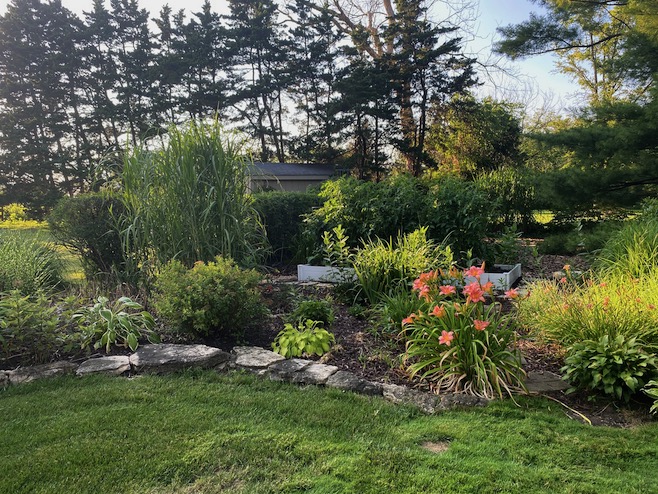
Final touches
Perhaps you noticed that the perennial bed in the middle of the yard is not edged in stone? That was intentional. We decided to keep those flowers, but make it easier for future owners to convert the bed into grass if they prefer a larger expanse of lawn.
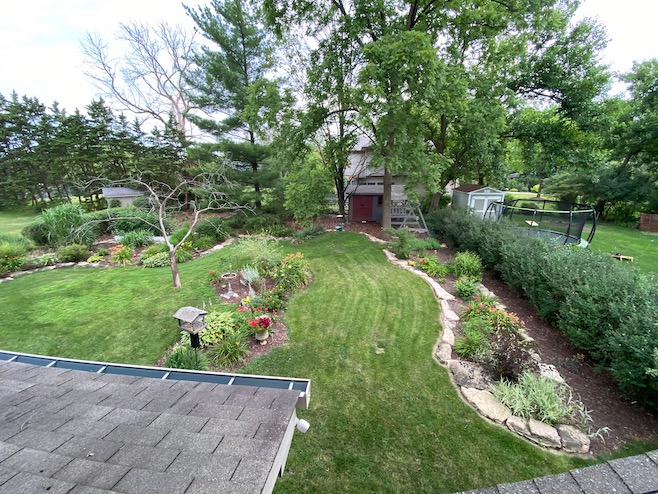
And did you spot the dead tree in the lawn? It used to be a flowering crabapple. We’re reluctant to take it down because the birds perch on it to access feeders and the birdbath. If we decide to put our home on the market and make a move, cutting it down will be the last job on our list.
